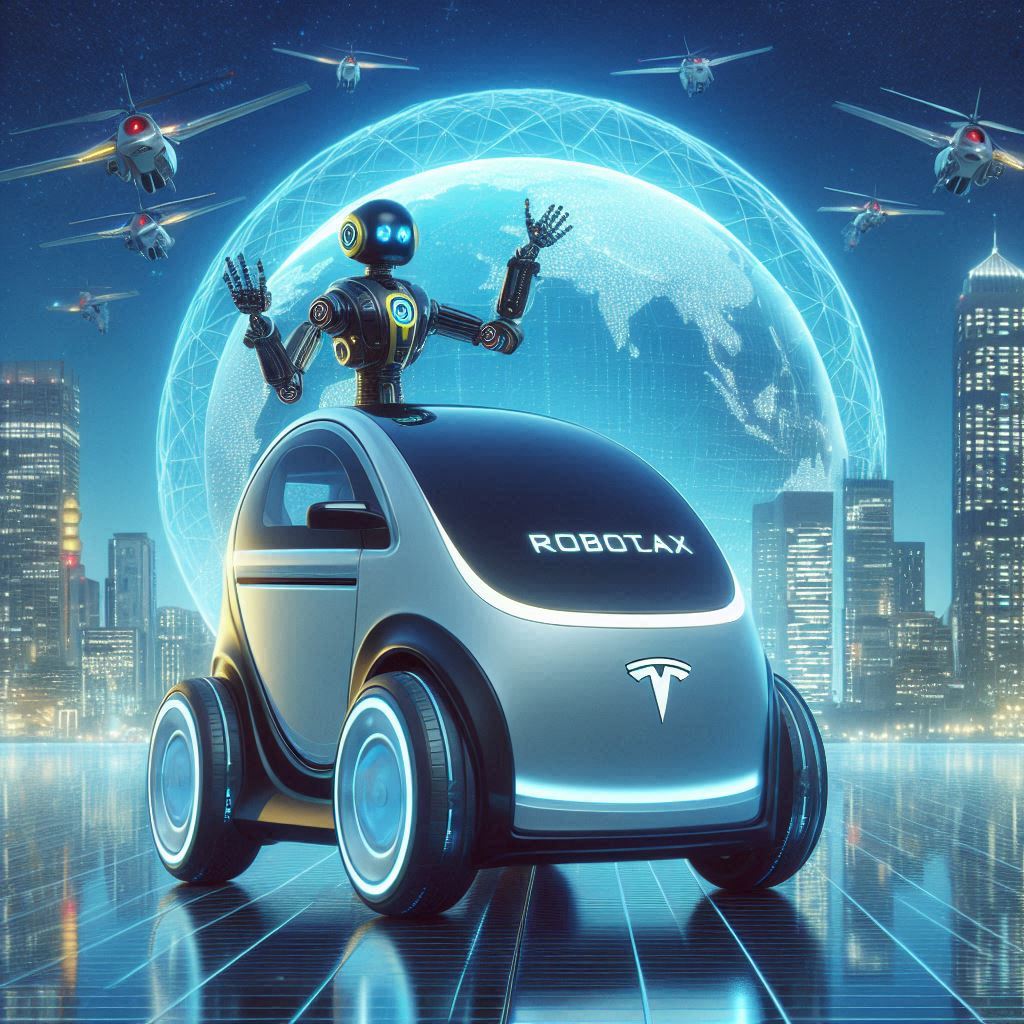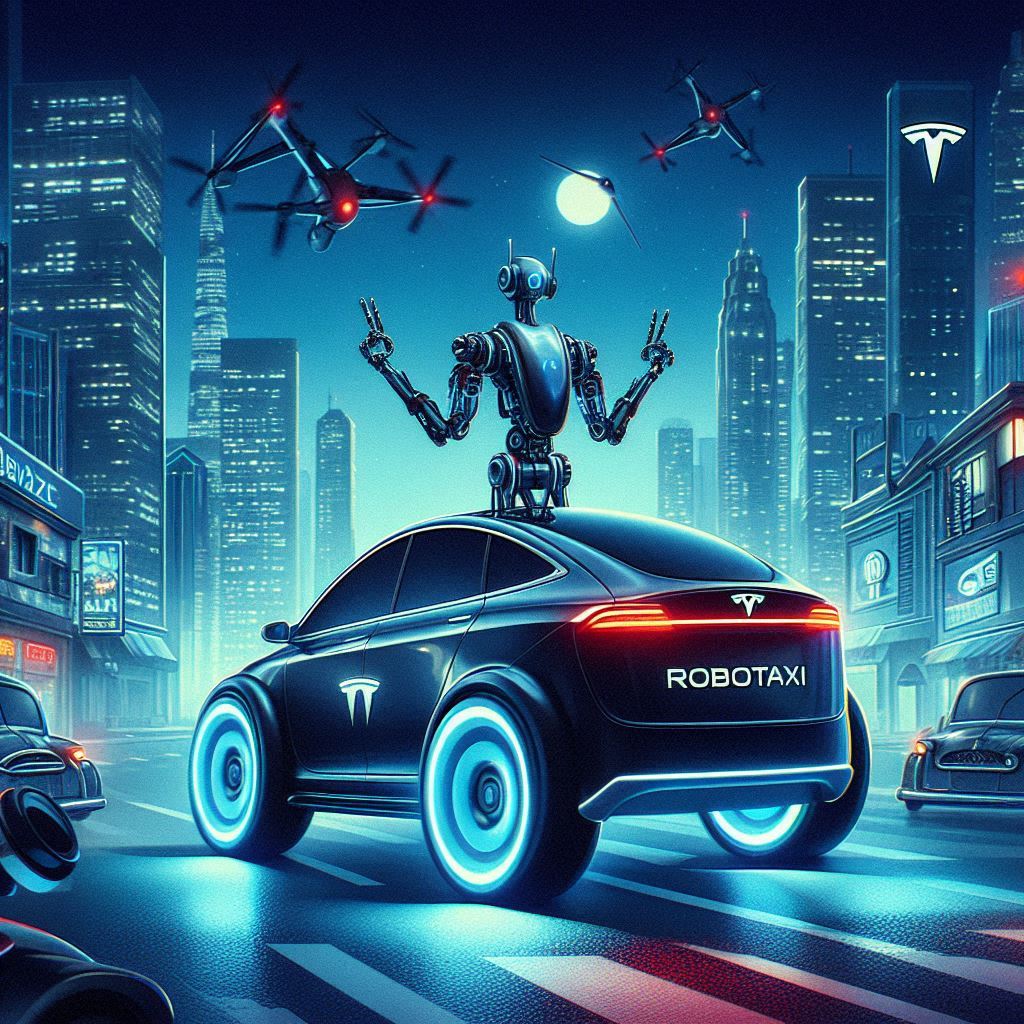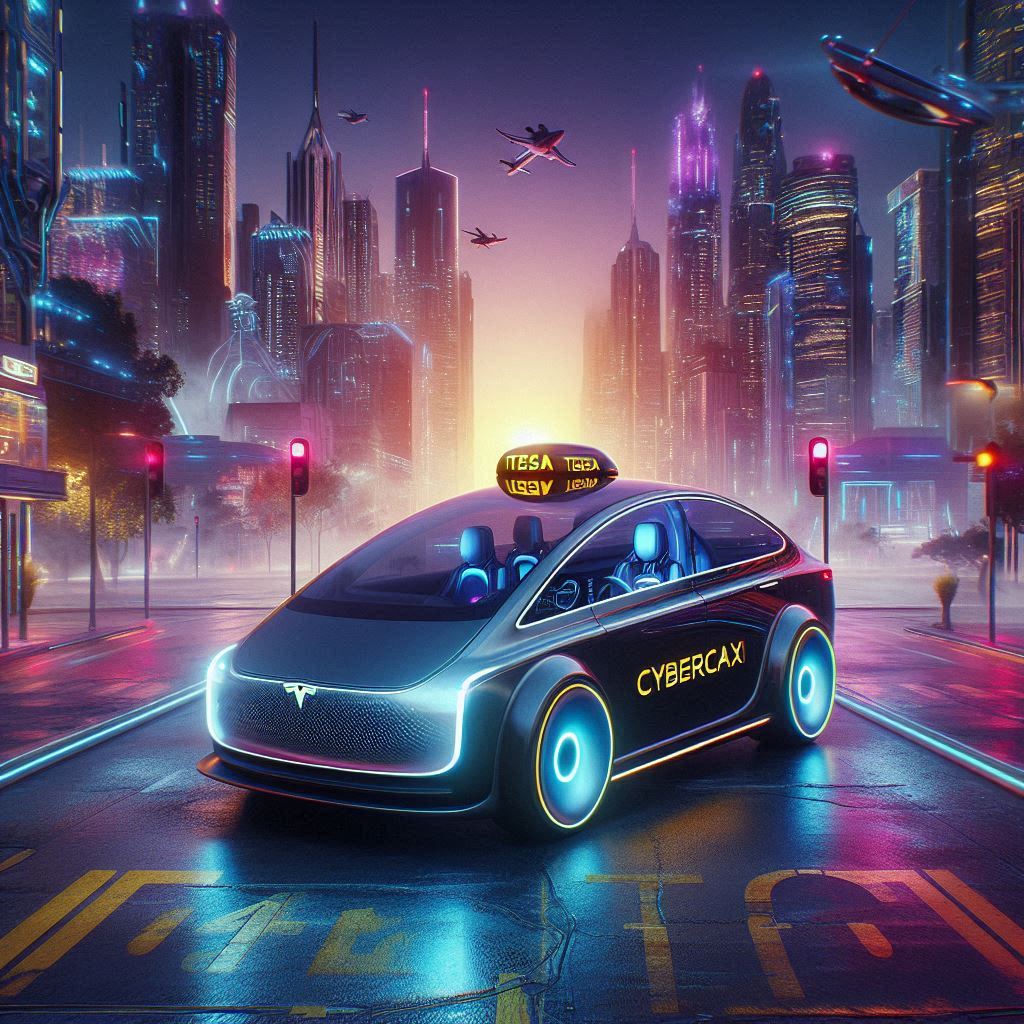
Cybercab Revolution: Tesla's RoboTaxi Set to Disrupt Ride-Sharing
Tesla is poised to redefine the future of transportation with the upcoming unveiling of its dedicated robotaxi vehicle, potentially named the “Cybercab,” on October 10, 2024. This groundbreaking announcement marks a significant step forward for the company’s autonomous vehicle ambitions and could reshape the entire ride-sharing industry.
Cybercab: A Game-Changer in the Making
The Cybercab represents Tesla’s vision of a fully autonomous, electric vehicle designed specifically for ride-hailing services. With a focus on safety, efficiency, and passenger experience, the Cybercab is expected to incorporate Tesla’s cutting-edge Autopilot technology and advanced hardware.
By creating a dedicated robotaxi platform, Tesla aims to optimize vehicle design for autonomous operation, potentially leading to lower costs, increased reliability, and enhanced passenger comfort. This specialized approach could give Tesla a competitive edge in the race to develop self-driving vehicles.
The Impact of Cybercab on Ride-Sharing

The introduction of the Cybercab could have profound implications for the ride-sharing industry:
- Increased Competition: Tesla’s entry into the ride-hailing market with a fleet of dedicated robotaxis will intensify competition for existing players like Uber and Lyft.
- Potential for Lower Costs: The efficiency of autonomous vehicles and the elimination of human drivers could lead to lower operating costs, potentially resulting in reduced fares for passengers.
- New Revenue Streams: Tesla’s “Airbnb” model, allowing car owners to opt their vehicles into the ride-sharing network, could create additional revenue opportunities for Tesla and vehicle owners alike.
- Technological Advancements: The development of the Cybercab is likely to accelerate advancements in autonomous vehicle technology, benefiting the entire industry.
Challenges and Opportunities for Cybercab

While the Cybercab holds immense promise, Tesla faces several challenges in bringing its vision to fruition:
- Technological Hurdles: Achieving full autonomy at a level that meets safety standards is a complex and ongoing process.
- Regulatory Landscape: Navigating the evolving regulatory environment for autonomous vehicles will be crucial for Tesla’s success.
- Infrastructure Requirements: The widespread adoption of robotaxis will require supporting infrastructure, such as charging stations and maintenance facilities.
- Public Acceptance: Gaining public trust in autonomous vehicles is essential for widespread adoption.
Despite these challenges, the potential rewards for Tesla are substantial. A successful Cybercab could solidify Tesla’s position as a leader in the transportation industry and generate significant revenue through ride-hailing services.
As the countdown to the Cybercab unveiling begins, the world watches with anticipation to see how Tesla will redefine the future of mobility.
Other Companies doing in this space
Several companies are actively working on autonomous ride-sharing services, each bringing unique approaches and innovations to the market. Here are some key players:
1. Uber
Uber has been investing heavily in autonomous vehicle technology. They have partnered with companies like Argo AI to develop self-driving cars. Uber’s goal is to integrate these autonomous vehicles into their existing ride-sharing network, potentially reducing costs and increasing efficiency.
2. Lyft
Lyft is also making strides in the autonomous ride-sharing space. They have collaborated with companies like Waymo to bring self-driving cars to their platform. Lyft aims to create a hybrid network where both human-driven and autonomous vehicles coexist.
3. DiDi Chuxing
DiDi, a major ride-sharing company in China, is developing its own autonomous vehicle technology. They have been testing self-driving cars in various cities and plan to integrate them into their ride-sharing service.
4. Waymo
Waymo, a subsidiary of Alphabet (Google’s parent company), is a leader in autonomous driving technology. They have launched Waymo One, a fully autonomous ride-hailing service in select areas. Waymo’s extensive testing and development make them a significant player in this space.
5. Cruise
Cruise, backed by General Motors, is focused on creating a fleet of autonomous electric vehicles for ride-sharing2. They have been testing their vehicles in urban environments and aim to launch a commercial service soon.
6. Aptiv
Aptiv, in partnership with Lyft, has been testing autonomous ride-sharing services in Las Vegas. Their focus is on creating safe and reliable self-driving technology that can be integrated into existing ride-sharing networks.
7. Aurora
Aurora is another company making significant progress in autonomous driving. They have partnered with Uber and other companies to develop self-driving technology for ride-sharing and logistics.
Conclusion
The autonomous ride-sharing market is rapidly evolving, with many companies investing in technology and partnerships to bring self-driving cars to consumers. Each company has its own strategy, but the common goal is to create safer, more efficient, and cost-effective transportation solutions.
How are the rules messing with the whole self-driving car deal?

Okay, so regulations are like the referees in the game of self-driving cars. They’re super important for keeping things fair and safe. Here’s the lowdown on how they’re affecting the scene:
The Rules as They Stand Now
Federal Stuff: In the good ol’ US of A, the NHTSA (that’s the National Highway Traffic Safety Administration) has made some guidelines for these robot cars. They’re all about safety, making sure they don’t crash, and sharing info on how they work.
State Rules: Now, each state has its own set of rules, kind of like how your mom has house rules and your school has school rules. Some, like California, want companies to get special permission to test these cars on the streets.
International Game Plan: Other countries like Germany and Japan are also setting the rules for these cars. They’re pretty strict about safety and making sure everything’s tested well.
The Tricky Bits with Regulations
Safety First: Everyone’s super worried about safety. Governments are trying to figure out a way to make sure these cars are as safe as can be, so everyone feels good about them.
Whose Fault Is It Anyway?: If a self-driving car gets into a fender bender, who’s to blame? The car, the person who made the car, or the person who owns it? Regulations have to tackle this messy situation.
Big Brother’s Watching: Self-driving cars hoard a ton of data. We need rules to make sure that data doesn’t get into the wrong hands and that people’s privacy isn’t invaded.
Road Ready: These cars need some fancy infrastructure, like special lanes, charging spots, and maintenance hubs. Regulations gotta back up the spending for that.
The Upside and What’s Next
Test Drives for Everyone: Governments are all for more testing and letting these cars loose on the streets. It’s like they’re saying, “Let’s see what you got!”
Going Green: Some rules are pushing for these cars to be totally eco-friendly, with zero emissions. It’s like telling cars to eat their veggies.
Everyone Can Ride: They’re also starting to think about making sure these cars work for people with disabilities. So, it’s not just for the tech-savvy folks.
The Takeaway
So, regulations can be a pain because they can slow down how fast we get these cars. But, they’re also like a guardian angel because they want to make sure the cars are safe and helpful for everyone. It’s a balancing act, and how companies deal with these rules will totally shape the future of self-driving cars.
What are the safety standards for autonomous vehicles?
Safety standards for autonomous vehicles are critical to ensure their safe deployment and operation. Here are some key aspects of these standards:
1. Federal Motor Vehicle Safety Standards (FMVSS)
The FMVSS are a set of regulations in the United States that specify design, construction, performance, and durability requirements for motor vehicles. For autonomous vehicles, these standards are being adapted to address unique challenges, such as the absence of traditional controls like steering wheels and pedals.
2. National Highway Traffic Safety Administration (NHTSA) Guidelines
The NHTSA has issued guidelines for the safe testing and deployment of autonomous vehicles. These guidelines focus on:
- Safety Assessment: Manufacturers must submit a safety assessment report detailing how they address safety concerns.
- Testing Protocols: Rigorous testing protocols to ensure the reliability and safety of autonomous systems.
- Data Sharing: Encouraging data sharing to improve safety and performance across the industry.
3. Occupant Safety Standards
New standards are being developed to ensure the safety of occupants in autonomous vehicles. This includes considerations for vehicles without traditional driver seats and controls. The NHTSA has created specific occupant safety standards for these vehicles.
4. International Standards
Countries like Germany and Japan have their own safety standards for autonomous vehicles. These often include stringent testing and certification processes to ensure that autonomous vehicles meet high safety standards before they are allowed on public roads.
5. IEEE Standards
The IEEE has developed standards for the assumptions and models used in safety-related automated vehicle behavior. These standards help ensure that the development of autonomous vehicles considers all reasonable scenarios and safety concerns.
Key Safety Considerations
- Collision Avoidance: Autonomous vehicles must be equipped with advanced sensors and algorithms to detect and avoid collisions.
- Redundancy Systems: Critical systems must have redundancies to ensure continued operation in case of a failure.
- Cybersecurity: Protecting autonomous vehicles from cyber threats is essential to ensure their safe operation.
- Human-Machine Interface: Ensuring that the interaction between humans and autonomous systems is intuitive and safe.
Conclusion
Safety standards for autonomous vehicles are evolving to address the unique challenges posed by this technology. These standards are essential to ensure that autonomous vehicles are safe, reliable, and ready for widespread adoption.
Is the Driverless Dream Derailing? The Future of Autonomous Vehicles in 2023 and Beyond
Levels of Autonomous Driving You Need To Know
Self-Driving Cars Set to Revolutionize UK Roads by 2026





